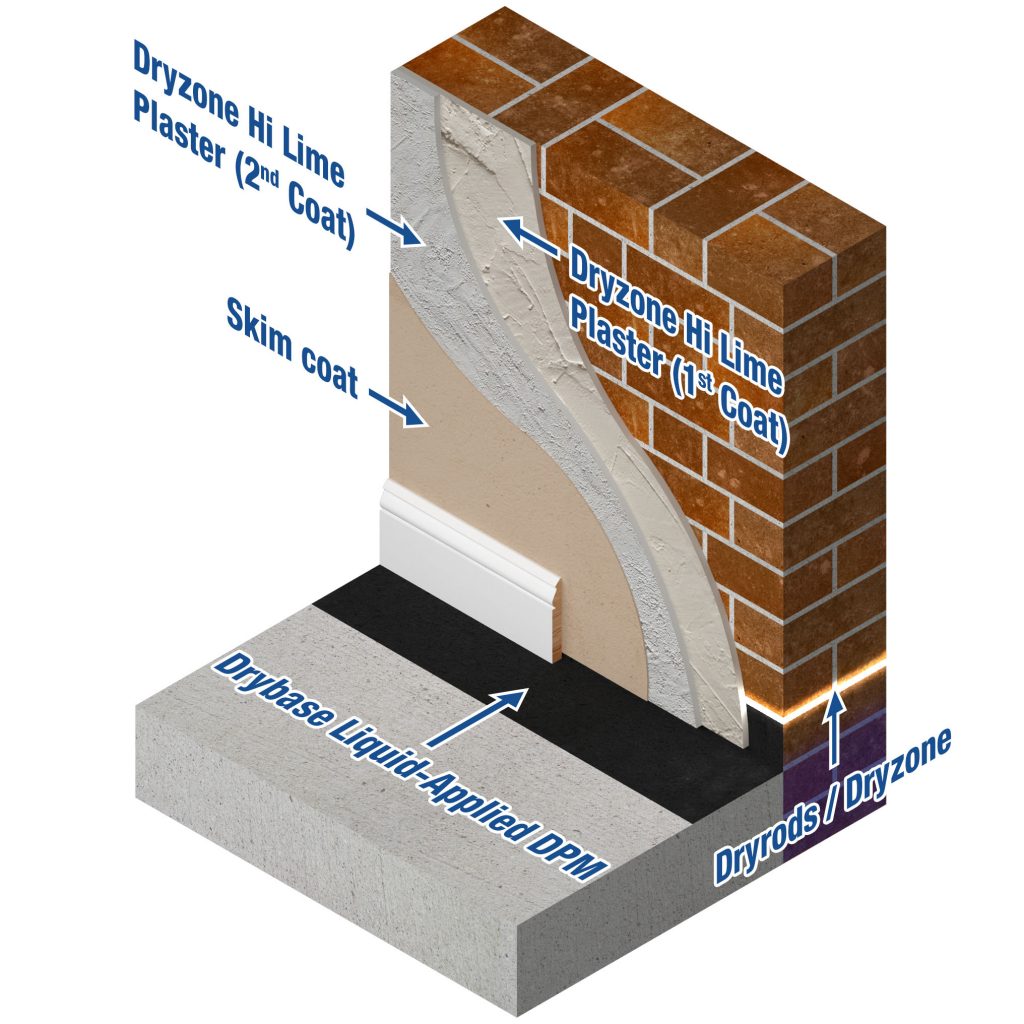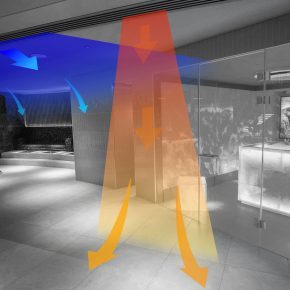
New plaster research points to alternatives to lime
While conservation officers and others are keen to ensure the use of traditional lime-based plasters and renders on listed and heritage buildings; research into new technology by Safeguard Europe – the UK’s leading specialist in damp-proofing and waterproofing technology – suggests better, more effective options are available.
The preference for lime plasters in conservation applications today is because of their perceived traditional material composition and, especially, breathability – allowing walls to attenuate moisture to the environment.
However, in the face of rising or penetrating damp, lime plasters can start to fail. This is especially the case where the dampness introduces salts into the plasterwork. Furthermore, new research shows that lime plasters are far from the most breathable of their kind; and modern hybrid ‘hi-lime’ or damp-resistant materials are far more effective.
In these tests, hi-lime plasters were shown to allow transmission of around 1.2kg/m 2 of water vapour over a fourteen-day period, compared to 0.85kg/m 2 for a traditional mix of 3:1 sand and lime and 0.35 kg/m 2 for 3:1 sand and cement. More interestingly, recently introduced proprietary damp-resistant and fast set plasters were also shown, over two weeks, to transmit 1.55 kg/m 2 and 1.48kg/m 2 of water vapour respectively.

Consequently, there is a need for internal plastering systems that are impervious to damp; while not creating the problems associated with a sand and cement system: condensation risk and vapour impermeability.
New ‘second generation’ plastering systems have been introduced that are more resilient to dampness and salts than traditional plastering methods. These modern systems are capable of being applied to walls that are still damp and can resist high levels of moisture and salt ingress. The make-up of these plasters means they have large pores and a high pore volume. This allows salts to form within the plaster rather than on the surface; and the high pore volume results in thermal resistance, reducing the risk of condensation.
Other properties include a low bond strength, ensuring that the plaster can easily be removed later without damaging underlying brickwork; high water vapour diffusion (breathability) and conformity to the EN998-1 CE Standard as ‘Renovation Mortars’.
While traditional plasters have been used on internal walls for thousands of years to create smooth, decorative surfaces – lime-based plasters were used in Jordan as long ago as 7500 BC, and clay and gypsum in ancient China and India – the orthodoxy around plastering in listed and conservation environments, save when special materials or skills are demanded; can now be effectively challenged: and in the best interest of heritage buildings too.
For further details of Safeguard’s advanced, high-performing hi-lime and damp- resistant plasters, visit the website.
Contact:
Safeguard Europe,
Redkiln Close,
Horsham,
West Sussex,
United Kingdom,
RH13 5QL
Phone: 01403 210204
Fax: 01403 217529
Visit Safeguard Europe's website
Visit Supplier's page
Latest news

1st April 2025
Gilberts Takes Thermal Comfort to New Heights
Gilberts Blackpool is continuing to build on its reputation as a pioneer with the unveiling of ThermaAstute™ – the most extensive range of thermally sensitive diffusers in the market.
Posted in Air Conditioning, Articles, Building Industry News, Building Products & Structures, Building Services, Facility Management & Building Services, Heating, Ventilation and Air Conditioning - HVAC, Innovations & New Products, Restoration & Refurbishment, Retrofit & Renovation, Sustainability & Energy Efficiency
1st April 2025
University of Bath Student Helps Vent-Axia Win Two Environmental Industry Awards
Leading ventilation manufacturer, Vent-Axia, is delighted that the valuable work University of Bath student Roben Els undertook during an industry placement at the company contributed to it winning two environmental industry awards.
Posted in Air Conditioning, Articles, Awards, Building Industry Events, Building Industry News, Building Products & Structures, Building Services, Heating, Ventilation and Air Conditioning - HVAC, Recruitment, Retrofit & Renovation, Sustainability & Energy Efficiency, Training
1st April 2025
Ahmarra: Fire Doors Designed for Hospitals & Healthcare Environments
Ahmarra is a leading UK specialist in fire doors for healthcare environments, having manufactured and installed thousands of bespoke doorsets for NHS hospitals across London and the South East.
Posted in Access Control & Door Entry Systems, Accessibility, Acoustics, Noise & Vibration Control, Architectural Ironmongery, Articles, Building Industry News, Building Products & Structures, Building Services, Building Systems, Doors, Facility Management & Building Services, Health & Safety, Interior Design & Construction, Interiors, Restoration & Refurbishment, Retrofit & Renovation, Security and Fire Protection, Timber Buildings and Timber Products, Wooden products
1st April 2025
Mitsubishi Electric: New intuitive, IoT-ready centralised controller offers instant access to 400 units
Mitsubishi Electric has launched a new user-friendly, touchscreen controller to offer full remote controllability, monitoring and reporting for up to 400 air conditioning units.
Posted in Air Conditioning, Articles, Building Industry News, Building Products & Structures, Building Services, Facility Management & Building Services, Heating Systems, Controls and Management, Heating, Ventilation and Air Conditioning - HVAC, Information Technology, Innovations & New Products, Pipes & Fittings, Plumbing, Posts, Research & Materials Testing, Retrofit & Renovation, Sustainability & Energy Efficiency
 Sign up:
Sign up: